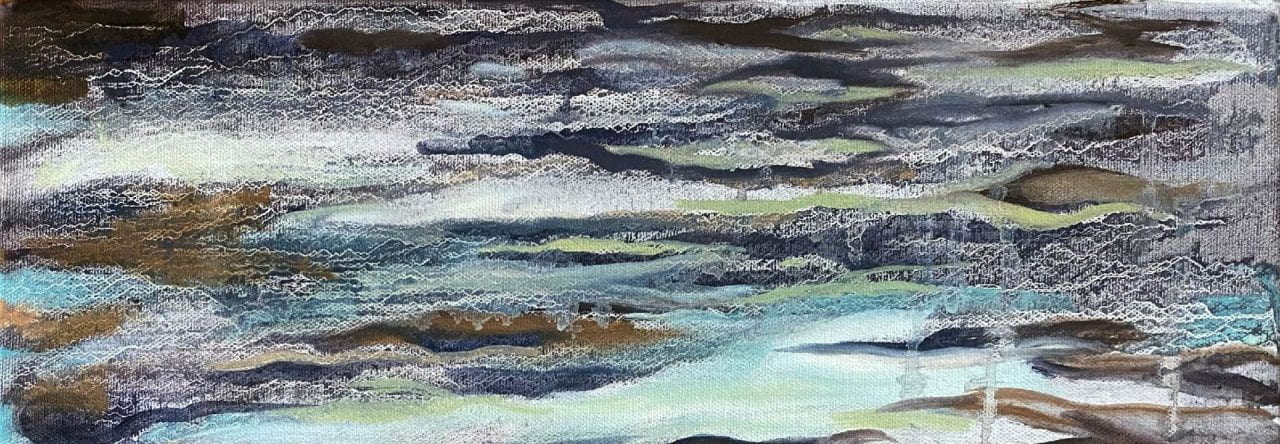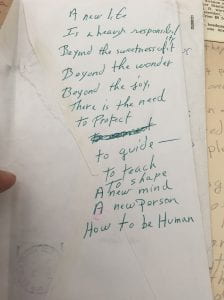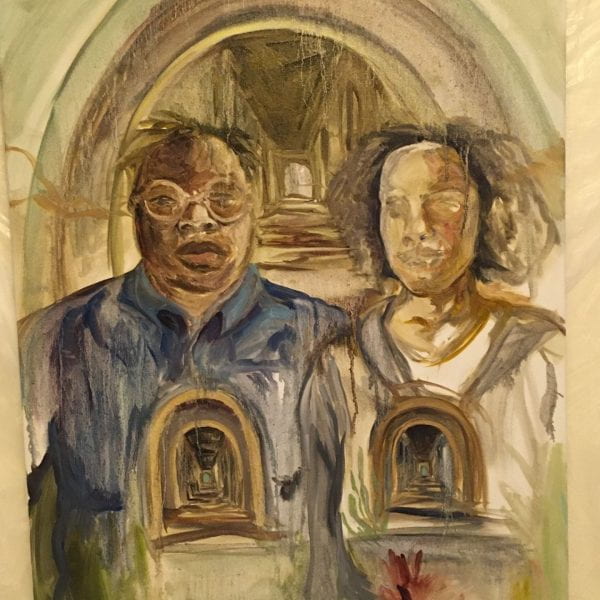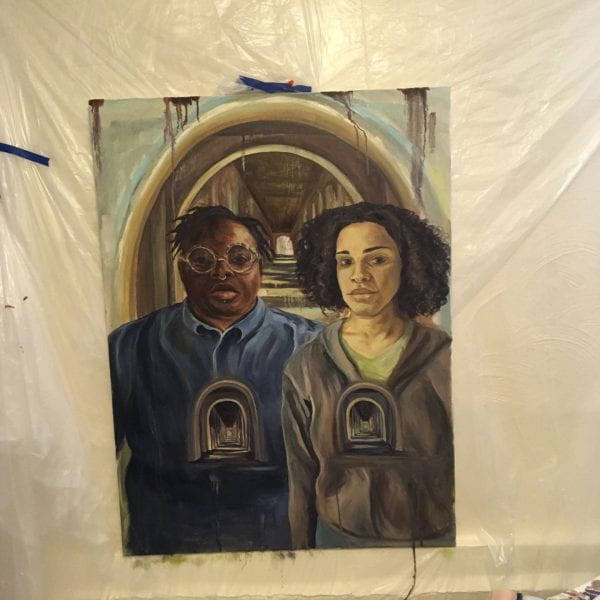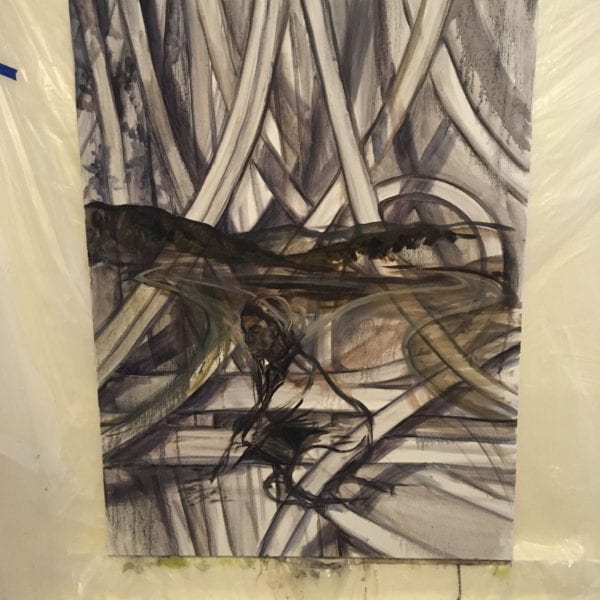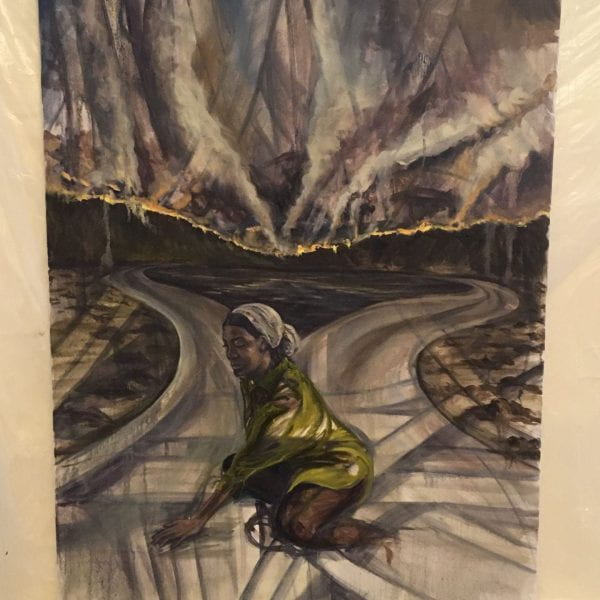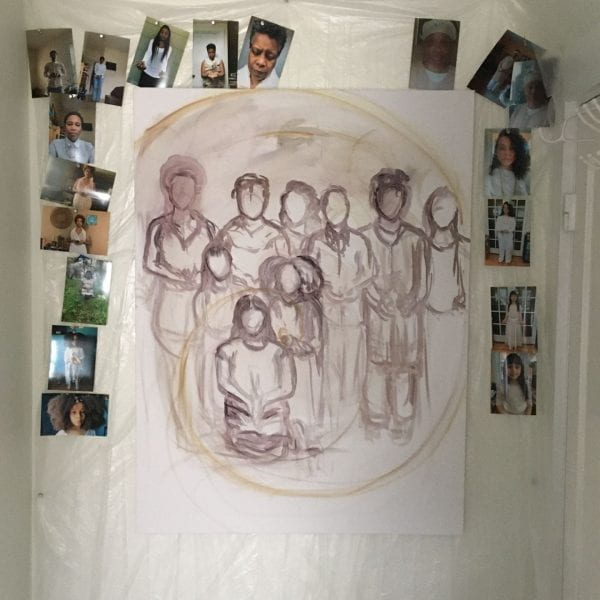My passion for Octavia Butler’s work and the fertile ground of my collaboration with Porsha is rooted in a drive to uncover the mystery of the human condition-the intense specificity of identity, space and time, as well as the factors that move beyond it. Butler’s writing questions what it means to be human, how to make sense of the skin as well as the bodies we inhabit….and both the horror and possibility of what we can do to/with each other and to/with the planet. There is an anchoring of herself, as a Black woman, in her work, that creates space and strength for her Black female protagonists to fully embody their power and potential without question.
In uncovering the pattern of reflection / abyss / vision / legacy, I too was drawn to my own subjectivity as a Black woman of mixed heritage. I wished to anchor my experience and my relationship with Porsha in the process of moving through the iterative journey of the pattern. I wanted my paintings to be an invitation for others to move through this process and I felt clear that I could only engage authentically with the viewer through sharing my own experience and communities. Like Butler’s stories, Black women are also the protagonists of the paintings for this project; they are at the center of each narrative.
This body of work is a culmination of gathering images, juxtaposing and layering them into each other and engaging in relationships with myself and with others. I wanted to invite viewers into a narrative with multiple entry points and considerations that is both spacious and specific. Each painting draws from many different visual sources: photographs from Butler’s archives, pictures I took during my time in Pasadena with Porsha, and people in my life, including myself, who I envision as protagonists in these stories or patterns that we are weaving together.
The imagery in each painting has its own story to tell. The succulents which find themselves in each piece become a metaphor for Black survival and resilience; they are plants of incredible diversity and can blossom and flourish under the harshest conditions. I don’t believe it was an accident that Butler chose to house her papers in a place surrounded by one of the largest and most diverse cacti gardens in the world.
The doorways featured in reflection, which quite literally invite the viewer into the continuum of Self, come from architecture on Cal Tech’s campus in Pasadena, blocks away from the Huntington Library. But they also reference the Door of No Return, an experience most likely shared by my and Porsha’s ancestors as they were enslaved and forcibly brought to the “New World.”
California freeways overlayed by forest fires and desert become the background of abyss. Many of Butler’s novels are shaped by the landscape of California, where she was born and raised, and reflect the devastating impact humans have wrought on the natural world. This painting asks the question: what does it mean to be in touch with this reality while also feeling for other possible roads to travel outside of what appears inevitable?
Vision brings in the collective, the intergenerational and ancestral knowing that creates the possibility for survival with dignity and hope. Each person depicted in this piece is a member of my community, which includes my godmother and goddaughter, dear sister friends, comrades, and collaborators. The objects they hold draw from the wisdom of the natural world, fractals that can teach us about transformation and change. Each consciousness represented in paint holds the knowing for how to be in community.
These paintings are meant to be meditations for the viewer. For those who are able to see the work in person, these meditations will culminate in an engaged activity around legacy. This interactive sacred space is reserved for contemplation and embodied action related to possibility. Succulents and light and a mirror will literally reflect a gathering point for participants to take the contents of imagery and poetry and make it their own. I invite you now, dear one, to do the same. May this movement through reflection / abyss / vision / legacy be a fruitful journey.
